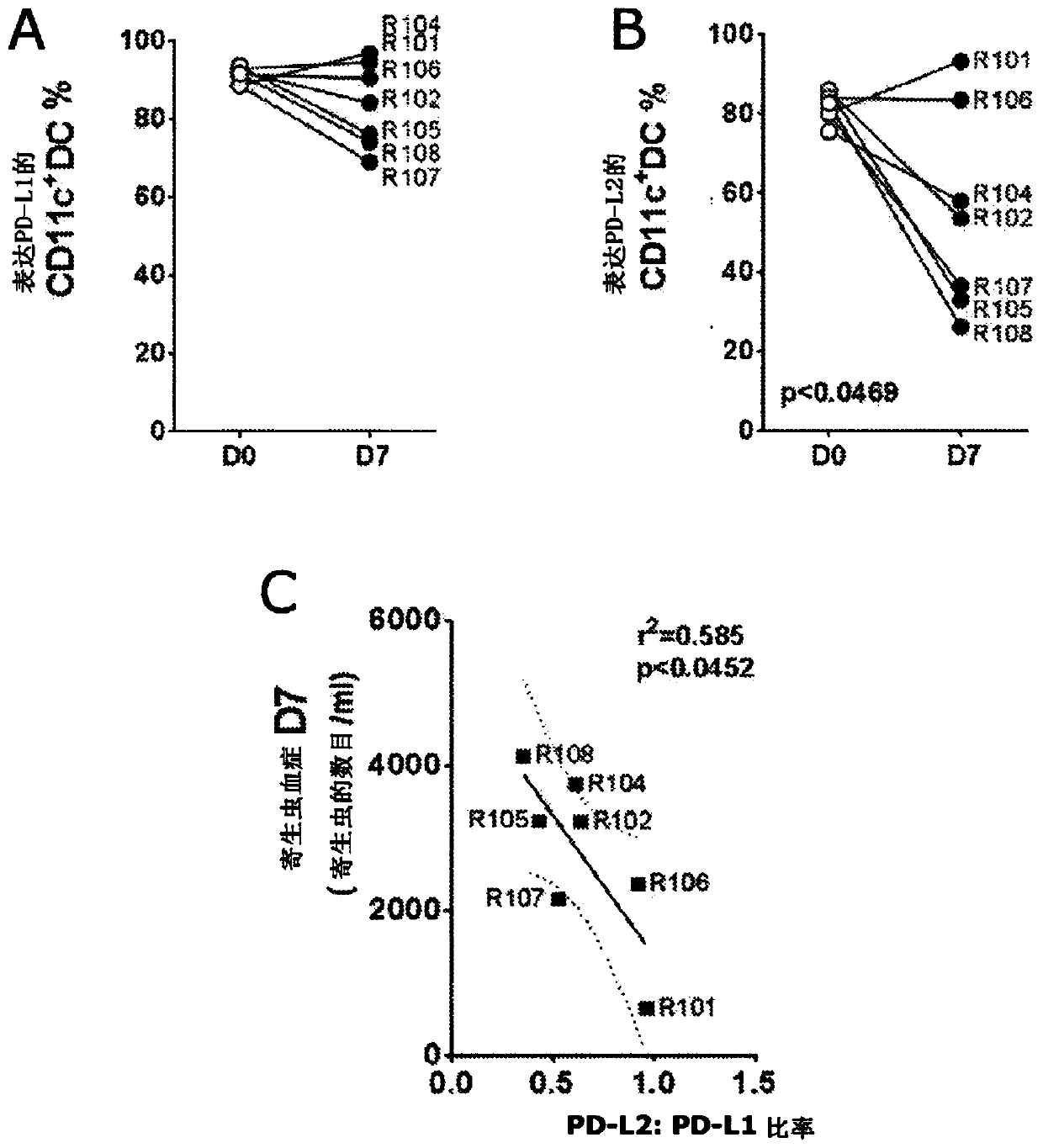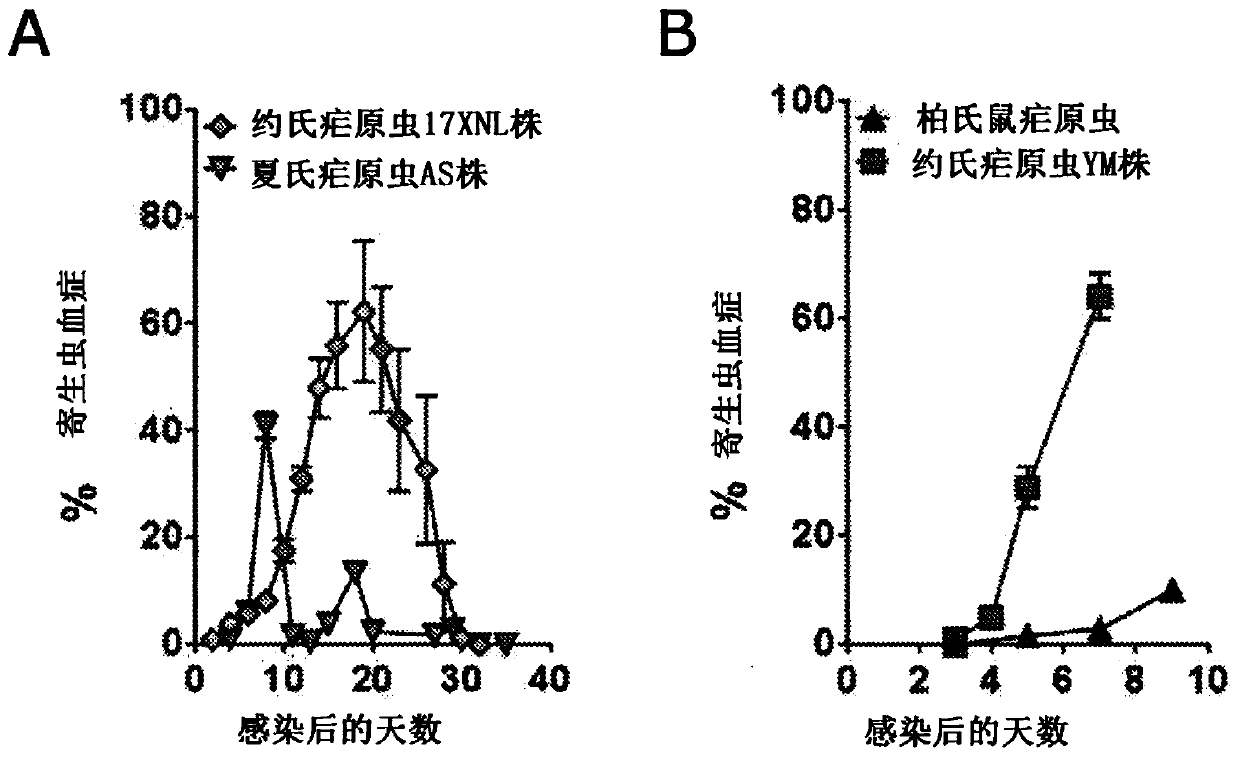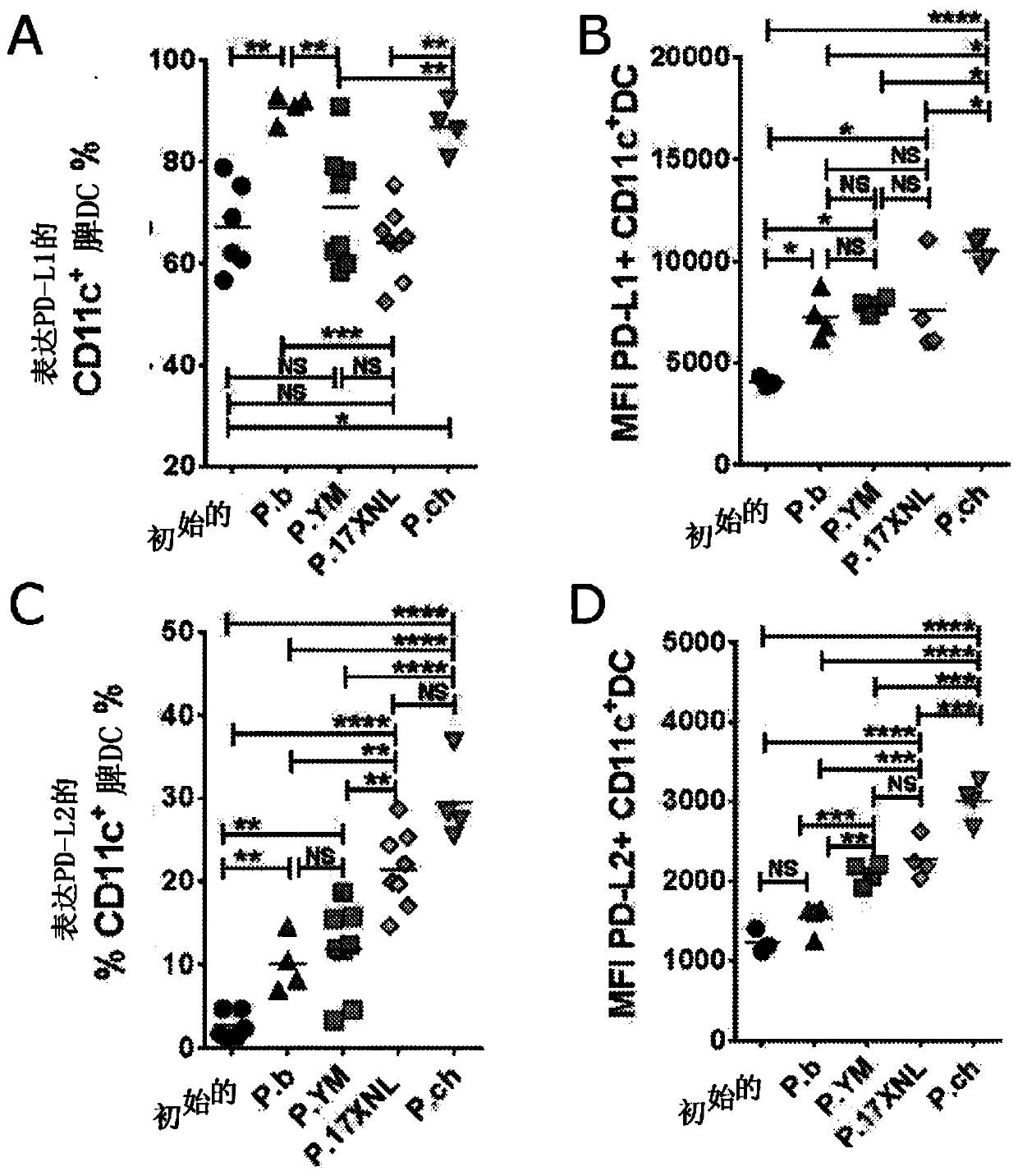Immune-modulating compounds
A technology of polypeptide complexes and oligomerization domains, applied in the field of compounds that modulate immune responses, can solve problems such as inability to infer the true value of anti-PD-L2 strategies
- Summary
- Abstract
- Description
- Claims
- Application Information
AI Technical Summary
Problems solved by technology
Method used
Image
Examples
preparation example Construction
[0441] The sample preparation method may include the steps of homogenizing the sample in a suitable buffer, removing contaminants and / or assaying inhibitors, adding a Th1 immune status biomarker capture reagent (e.g., a Th1 immune status biomarker that specifically binds a target Th1 immune status biomarker). partially attached magnetic beads), incubating under conditions that promote binding of the target biomarker to the capture reagent to generate a target biomarker:capture reagent complex, and incubating the target biomarker under conditions that release the target biomarker Species: captured complexes. In some embodiments, multiple Th1 immune status biomarkers are isolated in each round of separation by adding multiple Th1 immune status biomarker capture reagents (eg, specific for the desired biomarkers) to the solution. For example, in an illustrative embodiment, the biomarker is a nucleic acid, a plurality of Th1 immune status biomarker capture reagents each comprising ...
Embodiment 1
[0524] PD-L2 expression on DCs negatively correlates with human malaria severity
[0525] To determine whether PD-L1 and PD-L2 affect malaria immunity, 7 malaria-naïve healthy human volunteers were infected with 1800 P. Check their blood every day. Given their important role in pathogenesis (Wykes and Good, Nat Rev Microbial 6, 864-867, 2008), and because PD-L1 and PD-L2 on DCs can downregulate T cell immune responses (Brown et al., J. Immunol 170: 1257-1266, 2003; Freeman et al., J. Exp. Med. 192: 1027-1034, 2000), the present inventors studied DCs defined by CD11c expression. In all 7 volunteers, 90% of DCs expressed PD-L1 before infection, and the percentage of DCs expressing this ligand did not change significantly on day 7 of infection ( figure 1A). In contrast, although 80% of DCs also expressed PD-L2 before infection, 5 of 7 individuals showed significantly reduced (17-57%) PD-L2 at day 7 post infection + DC percentage ( figure 1 B). Notably, a significant negativ...
Embodiment 2
[0530] PD-L2 expression on DCs negatively correlates with malaria severity in mice
[0531] To understand the biological relevance of these data, the inventors next studied four mouse models of malaria. They selected four different Plasmodium species / strains to infect mice, each displaying unique biology and pathogenicity. When WT mice were infected with non-lethal P. yoelii 17XNL strain or P. chabkini, blood was examined for parasites every 1-3 days, infection proceeded at different rates, but both groups cleared within about 30 days Infect( figure 2 A). In contrast, WT mice infected with P. yoelii YM strain or P. berghei murine ANKA displayed a severe but distinct disease course ( figure 2 B; monitored according to Tables 3 and 4). Parasitaemia is lower with P. bergerii compared with P. yoelii YM strain infection because P. bergeri-infected RBCs retire from the blood to deep tissues, including the brain, resulting in lethal encephalopathy. However, all P. yoelii YM st...
PUM
 Login to View More
Login to View More Abstract
Description
Claims
Application Information
 Login to View More
Login to View More - Generate Ideas
- Intellectual Property
- Life Sciences
- Materials
- Tech Scout
- Unparalleled Data Quality
- Higher Quality Content
- 60% Fewer Hallucinations
Browse by: Latest US Patents, China's latest patents, Technical Efficacy Thesaurus, Application Domain, Technology Topic, Popular Technical Reports.
© 2025 PatSnap. All rights reserved.Legal|Privacy policy|Modern Slavery Act Transparency Statement|Sitemap|About US| Contact US: help@patsnap.com



